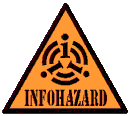In the early days, the push was to create a total immersion "Virtual Reality" with all it's 6 degrees of freedom, flock of bird interfaces, hacked nintendo gloves and 3D eyeglasses. The price of entry was just too high even if you hacked surplus technology. And the eyeglasses had a nasty effect of forcing your eyes to focus at a fixed distance but still do the stereo thing of moving independently to simulate distance. A sure fire recipe for a headache! Some of this tech has filtered down and found both consumer and commercial use in headset TVs and aerospace manufacturing.
Then, in the early days of the web we began to see experiments in creating a standard for 3D space to match the web's HTML standards for 2D space. Mark Pesce got VRML off the ground and gathered a large number of developers. We even had VRML plug-ins easily available off the MS and Netscape upgrade sites. But something wasn't right, the tech was too hard to use. And VRML never really solved the problem of including avatars in the scene. Recently Adobe have tried to do the same thing with Atmosphere. The language is similar but the UI is very similar. These systems should have opened up the possibilities for individuals to build 3D spaces in a web of interconnections on the web. But it's not happening. A UK company called Superscape, tried a similar approach with modest success. We've even had Apple with Quicktime-VR producing 3D images that you can navigate to a limited extent.
On a more commercial scale, Activeworlds and Blaxxun and others have combined the MUD, IRC, shared text worlds with 3D space and avatar systems. This was a marriage that has been tried many times originally in a Sega II style flat environment like Homeworld. It's all very pretty and you can indeed walk up to avatars and say "Hi". But it misses for me in that not enough happens. It's also pretty hard for an individual to extend and add new space.
And then in the early 90s, the game world changed everything. Cheap graphics hardware and inspired programming produced a whole new genre of game, the "1st person shooter" games like Wolfenstein-3D, Doom, Quake, Half Life and Unreal along with slightly different games like Descent introduced a big audience to high speed 3D worlds. The file format for the games was hard to hack, but it was open and tools appeared to allow people to build new space. A whole series of spin off games appeared using the same basic engines. But two things also happened. Up to that point, VR had always been about 6 degrees of freedom with essentially unlimited view and movement vectors. This is hard to compute and control. The Game people realized that if you simplified it a bit and had the participant running and jumping in space with walls and gravity, you could speed everything up dramatically. What's more you could control it with two hands a keyboard and a mouse.
And then of course, the games people gave us things to frag! Some of the games had real stories (especially Half Life) but the desire to frag stuff resulted in games like Quake Arena, where that's really all you do. And what makes them really fun is that they worked out how to network the games so you could frag other people instead of just monsters.
So now we have the technology and understanding to build a 3D environment that is fast, responsive, visually interesting and includes other people. We're getting close to the Neuromancer/Snowcrash idea. If we could extend this and work out how to make it relatively easy to create new space and link these new spaces up, we just might be able to get lots of 3D space built.
But as Clay Shirky points out, we also need something to do there. Wandering around looking at things doesn't hold the attention for very long, even in something as visually rich as Myst. And talking to people you meet in real time doesn't really cut it either. I can imagine events that were like 3D webcasts happening but this introduces huge bandwidth problems. Shame, because packing a virtual Madison Square Gardens to see a virtual Steve Ballmer dance would be great! Using the 3D world to display information is one possibility. It's not very well understood yet, and 3D graphics are hopeless for text so you would probably need two windows.
Another rich area for research is the possibility of de-centralizing the system in the same way that the web is spread across all the web servers in the world. Neuromancer had the concept of a new building appearing on the landscape and Snowcrash had new objects appearing that were visible to everyone. This is tricky when you have to inform all users who might see it, that a new object has appeared, when they're all de-centralized. This is quite like some other P2P problem spaces where the solution is often to replicate the object among all the participants. More bandwidth problems.
So here's the deal. I want;
worlds.
So in 2001 I'm again going to have to put the idea on one side again and wait. As bandwidth, processing power and storage keep doubling I still live in hope. And I do wonder if it's time to go back and try again with VRML3 or something.
[ << P2PJ - A new form of Journalism? ] [ Western governments and taxation >> ]
[ 0 comments ] [ G ] [ # ]




